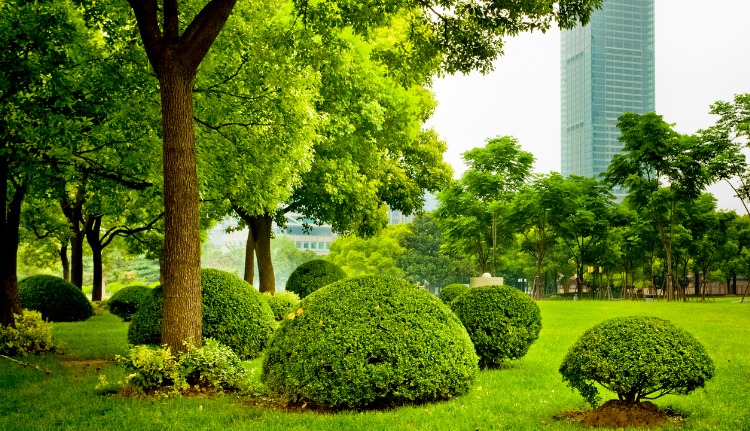
08 Mar When & Why: Balancing Between Trimming And Tree Removal
The presence of trees in our surroundings adds an irreplaceable charm. They provide shade during sunny days and contribute to the aesthetics of your premises. However, trees require deliberate care, which sometimes involves making tricky decisions about their health.
One such dilemma is choosing between trimming the tree and full tree removal. Knowing when to opt for each can be crucial for maintaining the tree’s health, the appeal of your property, and overall safety. While tree trimming and removal may sound like polar opposite activities, understanding their mutual importance is the key to effective tree care and landscaping.
- Aesthetic Balance: Regular trimming maintains trees’ aesthetic appeal, whereas removing dead or unwanted trees can enhance the overall visual balance of your property.
- Preserving Health: Through proper trimming, you can preserve the tree’s health, preventing future instances of removal.
- Safety: Balancing between trimming and removal helps eliminate potential hazards, ensuring your property’s and its occupants’ safety.
The Expanded Guide To Tree Trimming
Most arborists recommend trimming or pruning during the plant’s dormant stage. For most trees, this stage comes around late winter or early spring. Timing your tree trimming during these dormant periods helps minimize stress on the tree and reduces the potential for disease or pest infestation.
Safety is paramount. If your tree branches are getting uncomfortably close to your roof, diverting dangerously near power lines, or obscuring visibility on your property, immediate trimming should follow. Regardless of the season, prioritizing safety should always be at the forefront of your tree care strategy.
Overcrowding, a situation where branches within a tree begin crossing each other, can stifle a tree’s growth and overall health. Trimming these overlapping branches promotes better growth and fosters a healthier tree.
Tree Trimming — When’s the Right Time?
Trimming involves selectively cutting branches and stems to improve the tree’s overall health and longevity. It also ensures safety by removing overgrown or weak branches that could cause damage. When to Trim a Tree?
- Safety Concerns: When the tree’s branches become too large and hang too close to power lines, buildings, or walkways or are just at risk of falling, it is a clear indication for a trim.
- Health Issues: Trimming can prolong a tree’s lifespan. When you notice dead or diseased branches, remove them immediately to prevent the spread of disease.
- Aesthetic Reasons: Regular trimming can control the tree’s shape, boosting its appeal and enhancing your property’s overall look.
 The Guide To Tree Removal — The When And Why
The Guide To Tree Removal — The When And Why
While tree removal is not the first option, it is often necessary when the overall integrity of the tree is compromised, posing risks to people or property. However, there are instances where tree removal becomes a necessary course of action. This guide delves deeply into the typical situations that may necessitate tree removal and the timeline for when these actions might be required.
When To Remove A Tree: Pinpointing The Perfect Time
Like humans, trees can also fall ill, sustain damage, and eventually meet their end. In such instances, swift action is required in the form of tree removal to mitigate risks to people and property.
1. Removing Dead or Dying Trees
Among the most apparent signs that your tree trimming and removal needs to be conducted is when the tree is dead or dying. Such a tree can pose significant risks as it becomes weak and unstable, with the potential of the tree itself or its branches falling unexpectedly.
2. Disease or Insect Infestation
Some tree diseases or insect infestations are so severe that treating the tree becomes no more than delaying the inevitable. Preemptive tree trimming and removal may be wiser than maintaining a tree that will ultimately die anyway.
3. Damaged Trees
When a tree has sustained significant damage, such as from a lightning strike or severe storm damage, it might need to be removed via tree trimming and removal. This step is typically the safest, ensuring that your property is free from the potential hazards the damaged tree might cause.
Why Tree Removal Becomes Necessary
Understanding why tree removal might be necessary within your property landscape is vital. Below, we point out why tree removal sometimes becomes necessary.
- Risk Mitigation: The tree presents hazards that could result in damage or even injuries. In such cases, to prevent any untoward incidents, the tree should be removed promptly by professional tree care services for effective and safe removal.
- Disease Control: By removing a tree affected by a severe disease or infestation, you can prevent the spread of the disease to other nearby trees. A certified arborist can identify such conditions and suggest the best course of action to protect your landscape’s overall health.
- Structural Integrity and Aesthetic Appeal: Sometimes, a tree may impact the structural integrity of a building or obstruct the planned establishment of a structure. Other times, it just doesn’t fit the aesthetic of the landscape anymore. In either case, tree removal becomes a plausible option.
 Finding The Balance Between Tree Removal And Trimming
Finding The Balance Between Tree Removal And Trimming
When determining the best course of action for any given tree, it is crucial to weigh factors such as the tree’s health, safety risks, professional advice, and the importance of regular maintenance. By taking these elements into account, you can make more informed decisions that protect your property, the environment, and the overall health of your landscape.
Here are factors to consider
- Extent Of Damage Or Disease: Removal may be necessary if a large portion of the tree is dead or severely damaged. On the other hand, if the affected area is limited and manageable, trimming and treatment can significantly improve the tree’s health.
- Age And Species Of The Tree: Consider the tree’s species, age, and expected lifespan when deciding whether to trim or remove it. Some trees may have a limited life expectancy, and removing them may be more practical than attempting to prolong their inevitable decline.
- Location And Landscape Design: The tree’s location in relation to your property, other trees, and surrounding structures can play a significant role in your decision. A tree that obstructs views or detracts from your landscape’s design might warrant removal or extensive trimming.
- Seasonal Changes: Certain seasons are more conducive to tree trimming and removal than others. Trimming trees during the dormant season is generally best, as this puts less stress on the tree. However, emergency situations such as storm damage or safety hazards may necessitate immediate action regardless of the season.
- Cost-effectiveness: While tree trimming is typically less expensive than tree removal, there are situations where the ongoing trimming costs may outweigh the benefits of retaining the tree. Carefully assess the potential expenses associated with both options before making a decision.
- Emotional Attachment: Trees can hold sentimental value for property owners. If you have a strong emotional attachment to a tree, consider whether trimming can preserve it without significantly compromising its overall health.
Incorporating A Tree Service Company
When it comes to tree removal, you need experienced professionals to get the job done right. Certified arborists and professional tree removal services are equipped and ready to handle such tasks. They combine tree expertise and safety equipment to provide excellent service.
When it comes to tree removal, it’s crucial to have a reliable and experienced partner by your side, and that’s where Franks Lawn & Tree Service comes in. With over 40 years of experience in the land care industry, our certified arborists and professional tree removal experts are well-equipped to handle any tree-related tasks, ensuring your safety and satisfaction.
Franks Lawn & Tree Service is licensed and insured as a full-service tree company. We offer myriad services, including removing dead or diseased trees, trimming, stump grinding, and thorough cleanup after each job. Residential and commercial property owners alike can benefit from their prompt and affordable tree removal services.
Reach out to us today for a free estimate, and let them help you maintain the safety and beauty of your property.



